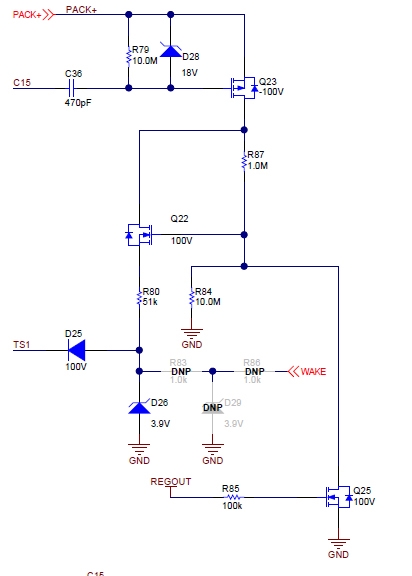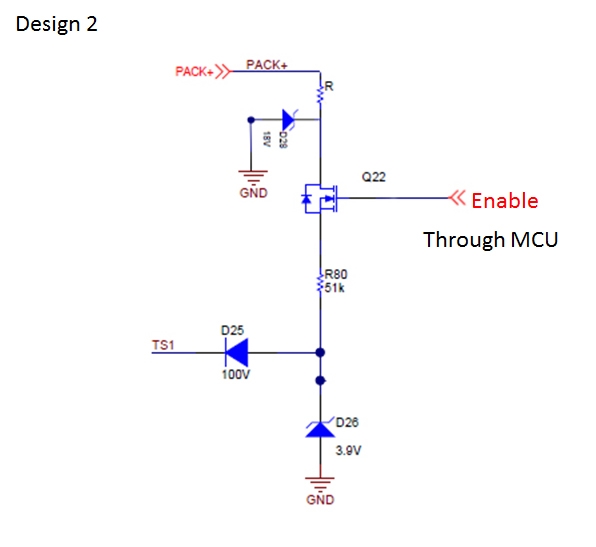Other Parts Discussed in Thread: TIDA-00792, BQ76940
Hi ,
Please explain the below circuit. Schematic TIDA-00792 (page 2)
1) How the Q23 will turn ON? Pack+ will be always ruining voltage so the same voltage will flow through R79 and Q23 doesn't get turn ON.
2) How much the Pack voltage will flow through R79? Pack depends on our total cell voltage? e.i. (for 13 cells )4.2V x13 cells 54.6V, 54.6V will flow through R79? or only single cell voltage ll flow ? 4.2V
-------------------------------
Design 2
Can i use below circuit for my project?
in this circuit i am controlling Mosfet through MCU
kindly reply



